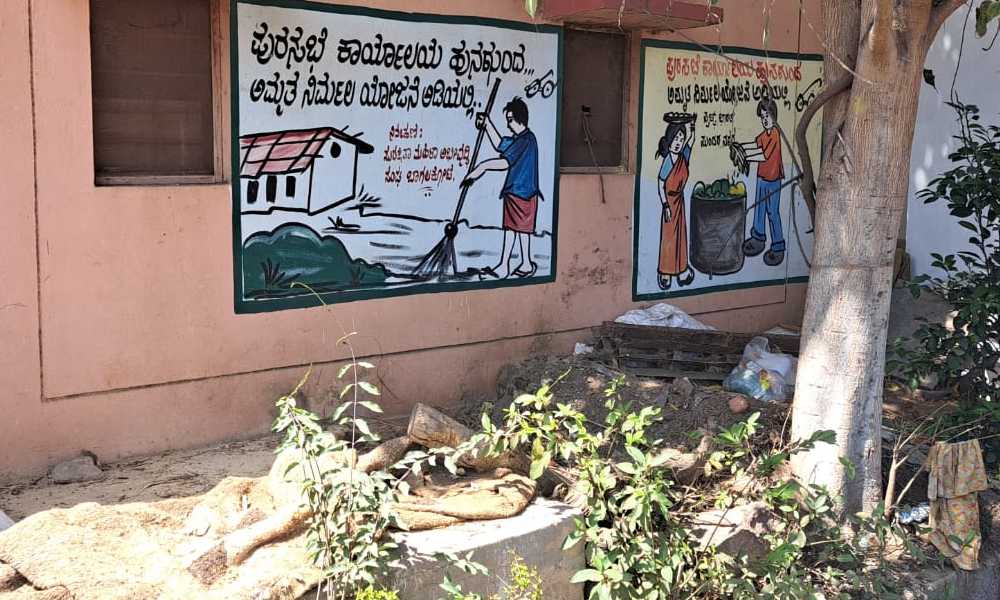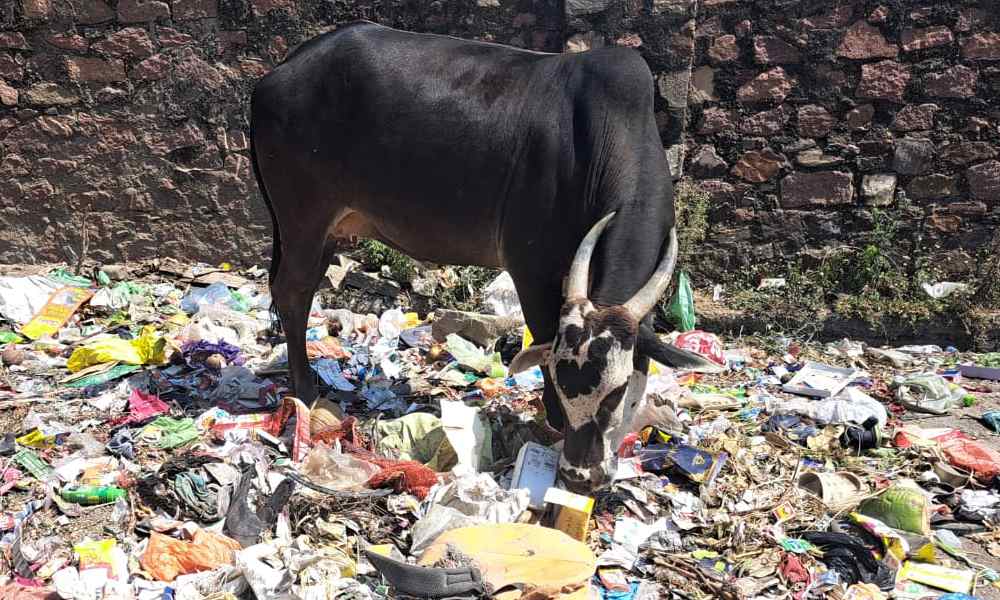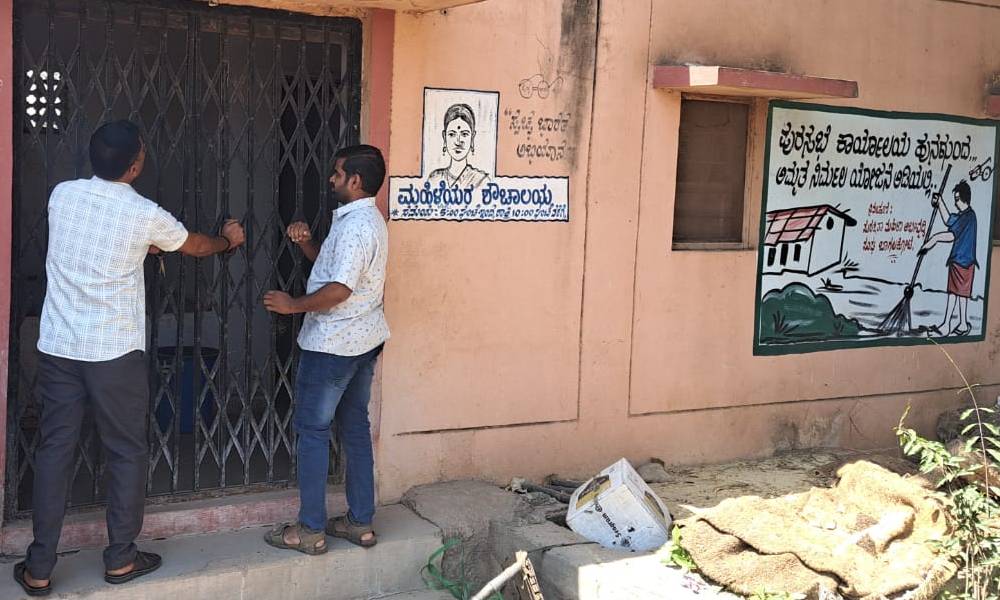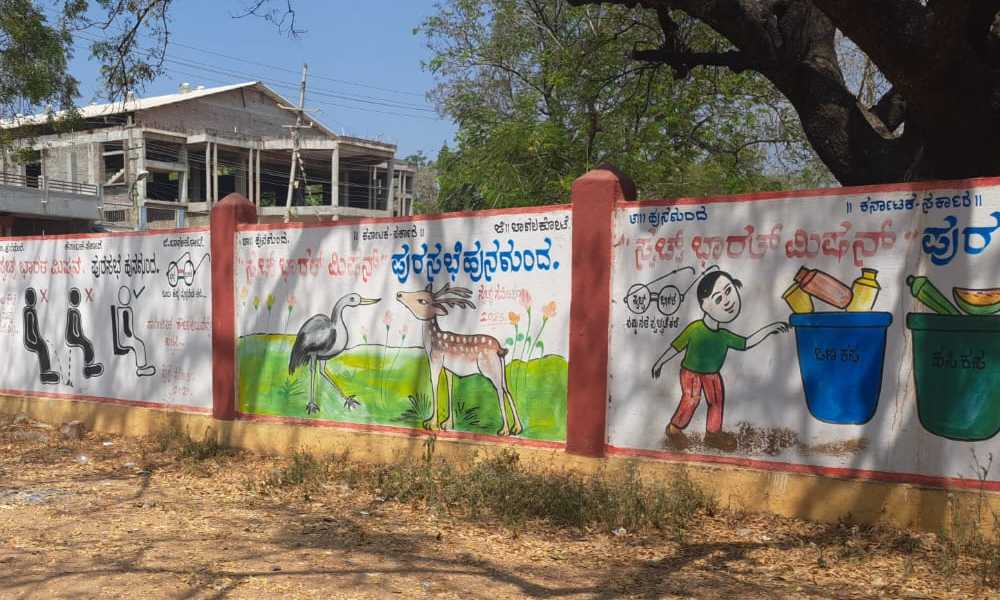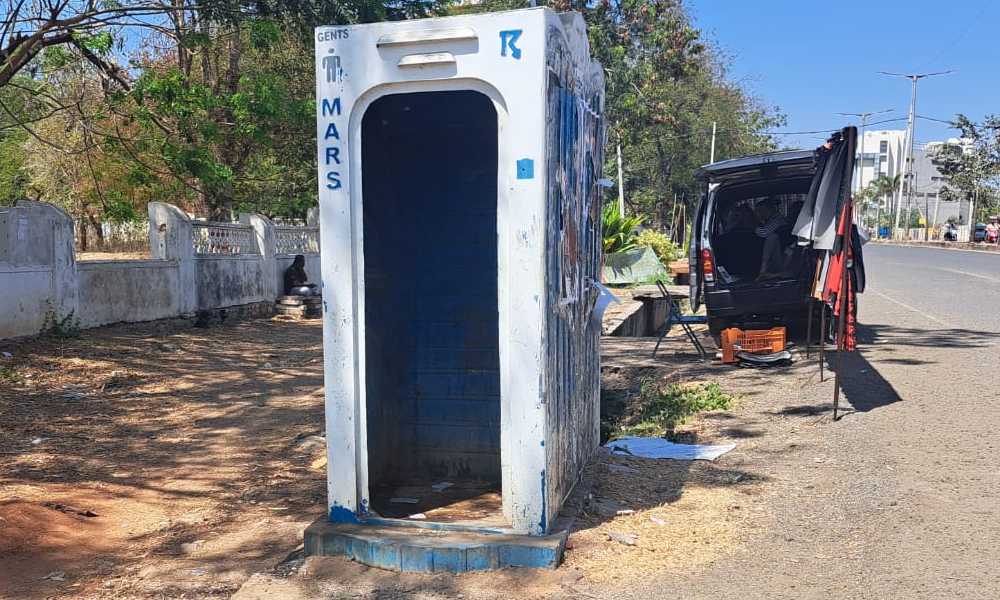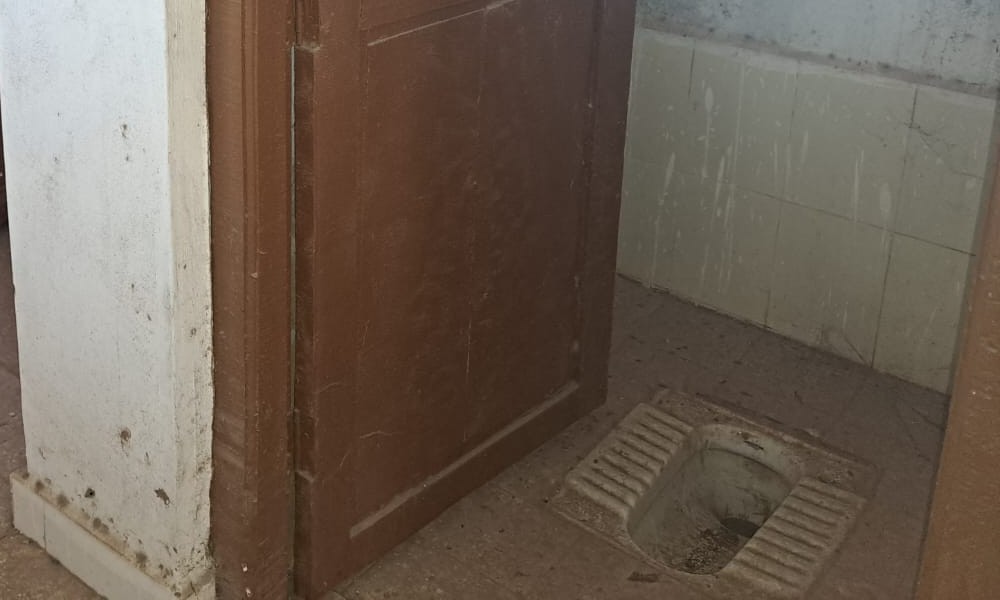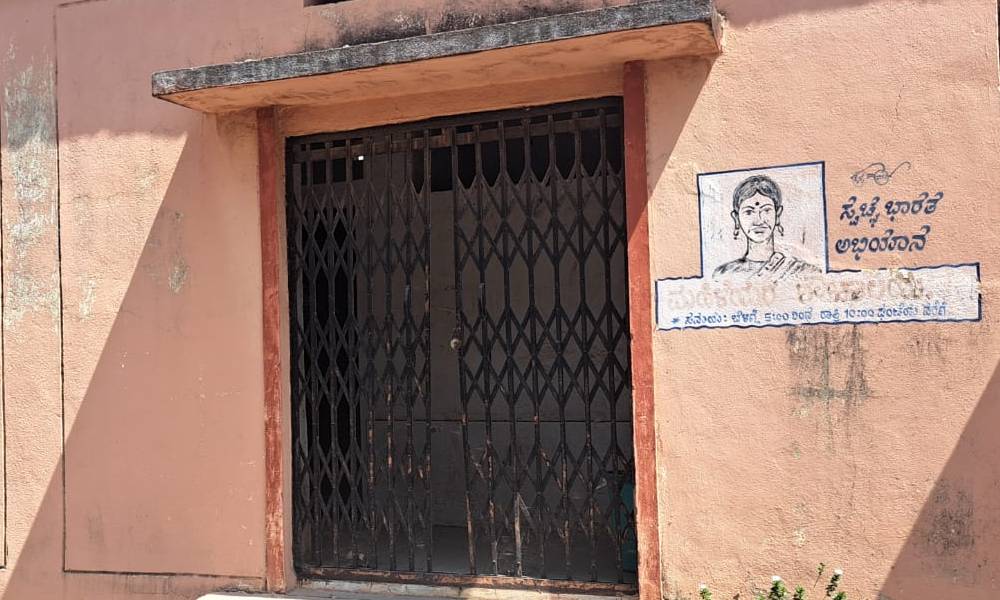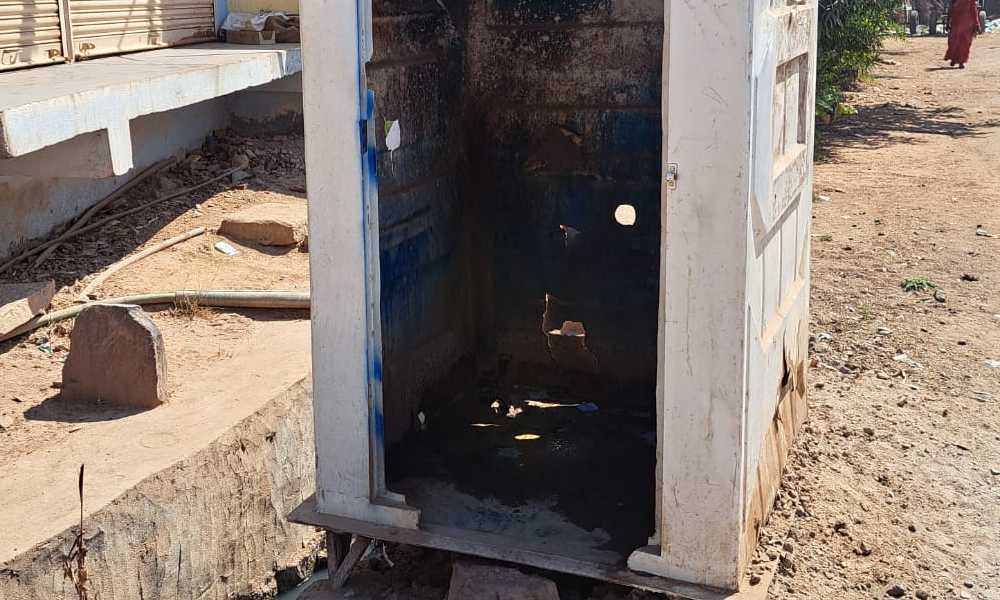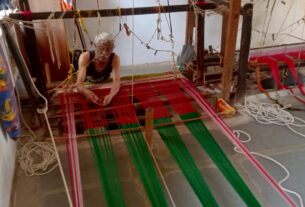The toilets in the taluk that were built less than a decade ago have mostly been closed for public use as a result of lack of maintenance.
Foul smell and emetic visuals, locked doors with rats, cockroaches breeding in them. Some are open to use but only if you manage to hold your breath for minutes. The stink spreads in the air around. You cannot stand it without your face covered. These buildings are being used as they should be on paper but in reality, they are nothing more than smelly gas chambers.
This is the reality of most community and public toilets in Hungund taluk of Karnataka. Many in Hungund are living a life of shame and helplessness. Their problems are too small for the authorities just like these people’s homes. Living in small homes that fit a family of six to eight, they have no space to build toilets. Clean and usable toilets are a luxury for many in the area. Community toilets were to be the savior of those who do not have individual latrines but only to people’s disappointment, most of these toilets are in an unusable state.
“We are no better than animals for the authorities. We are forced to go out in the open in areas where animals defecate, no one cares about our problems. Our days start and end with putting our dignity at risk,” women of Hungund Taluk said explaining their woes.
Shanthamma, an elderly woman in her 70s, sitting with folded hands in front of the community toilet of village Hungund said that the people of the taluk have complained about the closed and dirty toilets to the authorities several times but to no solution. She said that even at the time of elections, it was promised that people of the area will be given access to clean and functional toilets but nothing has been done yet.
“The community toilet in the village has been closed for the last seven years. Because of small homes, we don’t have individual latrines. So the only option we are left with is to go out in the open.This is where most women go to defecate,” she said pointing towards the roadside in front of the community toilet building.The women of village Hungund have to wait till dark to relieve themselves. They say that a persistent danger of snake bite, catching grave communicable diseases— apart from the biggest problem of putting their safety and self-esteem at stake, haunt them every day.
The issue of open defection has been done away with long back, at least in claims. Taluk Hungund, like entire India is Open Defecation Free on paper but the reality is fetid. As trivial as it may sound to a large, privileged section of society, “defecating in the open is an affront to dignity and risk to children’s nutrition and to community health,” Joint Monitoring Program defines. The World Health Organization/ United Nations Children’s Fund (UNICEF) Joint Monitoring Programme (JMP) is the custodian of global data on Water Supply, Sanitation and Hygiene (WASH).
From school buildings to panchayat offices, every government building is painted with attractive advertisements of clean toilets, clean India. But just adjacent to the beautifully painted walls is a public toilet that smells of dead rats and looks nothing more than a damaged big plastic structure.
The impediments: maintenance and water
According to data by the Municipal Corporation of Hungund, the taluk has eight community toilets that were built under the first phase of Swachh Bharat Mission (Clean India Mission). However, only in a few years, many of these toilets were closed for public use. The authorities have their explanations. Bellad Sharanappa Mallappa, member and ex- president of Town Municipal Council, Hungund, said that the main issue when it comes to the poor condition of toilets is the maintenance.
Apart from the cost of cleaning and maintenance, water connection is also a big challenge. Taluk Hungund is a drought prone area and was declared ‘drought hit’ in 2023. Dr. Chetna H.D, Chief Medical Officer, Hungund, said, “When one talks about the issue of open defecation in the area, we cannot ignore the fact that this is a drought prone area. There is a perennial water shortage here. People feel that it requires large quantities of water to use the toilets properly whereas when they go out in the open, they hardly need a small mug of water.”
The irony in case of taluk Hungund is that the authorities responsible for the maintenance of public and community toilets are aware of the abysmal state of these toilets. “There is no one to keep these toilets clean. Funds are given by the government but because they are divided into state and urban local bodies, not enough funds are given for the maintenance.” Sharanappa Mallappa said.
Considering the claims of the government, open defecation shouldn’t ideally be a problem of modern India. The country was declared Open Defecation Free (ODF) five years ago, in 2019 but has it actually and completely gotten rid of the problem? The answer is no, in taluks of Karnataka atleast.
Shanthamma and many like her in the area say that the roadside, although unwillingly, has become the toilet for them. They say the road is busy and vehicles keep passing by but they have no choice but to put their safety at stake.
Vimala, 43 year-old, who lives in village Ramodgi of taluk Hungund, said that it has been months since the community toilet of the area was damaged after the ceiling fell but the municipality has not repaired it yet. “Some people have toilets in their homes but most do not because of lack of space. Even the people who have individual toilets do not use it. But the issue is with people like us who were using the community toilets. We are now forced to defecate in the open,” she said pointing to an open drain behind the primary school wall of the village.
Dawood, a resident of Hungund village said, “Men still have the option of going to the fields on bikes as they are a bit far from the village but it’s the women who have to suffer the most because of closed community toilets.”
However, he also suggested that some families who do have individual toilets also do not use them prefer to go out in the open. He said, “Many homes in the village do not have individual toilets but some that do have them, do not use them because of orthodox beliefs and they also defecate in the open.”
Dawood said, “No one even talks about this issue now because on paper, everything is working perfectly. We men still have options but women have to walk to the fields, no one likes to go out in the open but what option do we even have?”
Experts say finding a solution to the problem of open defecation cannot be done with a top to bottom approach of governance. Dr. Chetna highlighted the causes behind open defecation and why people who have access to toilets, choose to go out in the open. She said, “There are various reasons why defecate out in the open, firstly, there are psychological barriers and assumptions. People we talked to say they feel suffocated inside washrooms and it is simply more comfortable for them to go out in open fields,” she said.
A widespread but concealed problem
Open defecation can be observed around popular tourist destinations in and around the taluk like, Aihole and Pattadakkal. Places of tourism and religious importance are also marred by lack of sanitation facilities. KudalaSangama, an important pilgrimage site for Lingayats is known for its beauty and serenity but heaps of garbage, fecal matter and under construction public toilets, which have been so for years are the other side of the shrine’s surroundings.
Despite having been ranked one of the top performers under the Swachh Bharat Mission, open defecation persists in several taluks of Karnataka. This suggests that the problem of open defecation and lack of sanitation facilities pans beyond just a particular area. Gurulingappa Bhadrannavar, health inspecting officer, taluk Hungund said, “The problem of open defecation persists because there are loopholes in the implementation of our policies. People are not aware of the dangers of defecating in the open and some who do realize it, do not have access to clean toilets.”
However, the problem is not limited to public and community toilets. The toilets in various schools are also not clean and safe for use. Jasmine Killedar, Block Education Officer, Hungund, admitted that toilets are not in a usable state at many schools in the area. She said that schools do not have enough funds to hire cleaners but more than that, it the lack of hygienic behavior among children that results in a situation of unclean and eventually unusable toilets.
Under the Swachh Bharat Mission (Clean India Mission), the central government reportedly built 10.9 crore individual household latrines (IHHLs), on the basis of which, India declared itself an Open Defecation Free country.
However, authorities do admit that it is not possible to provide an individual toilet to every home. Community and public toilets are being planned under the Swachh Bharat Mission 2.0.
According to the Municipal Council of Taluk Hungund, a total of 591 individual toilets were built under the first phase of Swachh Bharat Mission in the taluk while 60 new individual household latrines (IHHLs), have been proposed under the second phase of the scheme. V.S.Kotagi, engineer, Hungund Municipal Council, said that seven new community toilets across the municipality are being made, for which tenders have been given. “Six community toilets have been planned for now, with ten seats each. Some of these are being built in Other Backward Classes dominated areas while several others are being constructed in villages that have been identified for having issues with cleanliness.
Moreover, 14 new private/ individual toilets are being built according to applications received. The municipality is also planning to build an ‘aspiration toilet’ with modern facilities near the taluk stadium. Aspirational toilets are nothing but new category of toilets that were proposed to be constructed at historic/ tourist places with high footfalls under SBM-Urban 2.0.“It costs around two lakh to two lakh fifty thousand rupees to repair or refurbish a community toilet. Under the Swachh Bharat Mission 2.0, we are targeting to refurbish around 60 toilets in total.” V.S. Kotagi said.
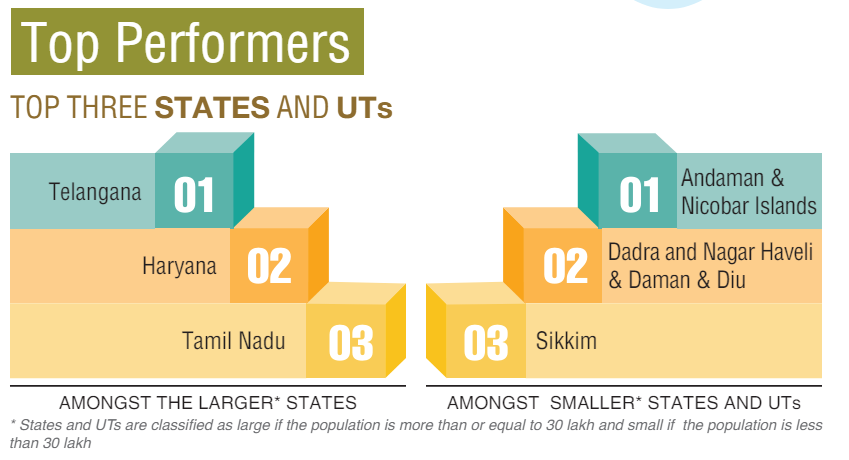
Sanitation- a distant dream
Open defecation is a less talked about but widespread problem across the country, despite claims by government that announce India to be completely open defecation free. Sanitation for all is still a distant dream for many in modern India.
The World Health Organization (WHO) and the United Nations Children’s Fund (UNICEF) released their Joint Monitoring Programme (JMP) report for water supply, sanitation and hygiene for households for the year 2022. The report suggests that the issue of open defecation and lack of access to adequate sanitation and hygiene is not area specific. According to the report, 17 per cent of the rural population in India still defecated in the open in 2022. One quarter of the rural population didn’t have even “at least basic” sanitation facilities.
Sustainable Development Goal target 6.2 aims to achieve access to adequate and equitable sanitation and hygiene for all and end open defecation, paying special attention to the needs of women and girls and those in vulnerable situations by 2030.
According to research by BMC Public Health, 90 percent of those who still practice open defecation live in rural areas of three regions; sub-Saharan Africa, Central Asia and Southern Asia. It suggests that “Open defecation is an issue that can affect everyone but women are often at more risk of experiencing violence and multiple health vulnerabilities. Women with poor sanitation facilities are more susceptible to hookworm infestation resulting in maternal anemia, which in turn is directly associated to adverse pregnancy outcomes. Women with limited or no access to toilet predominantly suffered from diarrheal diseases, a leading cause of under-nutrition among women during their reproductive age.”
A study published by Dean Spears and Arabinda Ghosh in 112 districts in India demonstrated that child stunting statistics were significantly higher in areas where the practice of open defecation was more frequent.All of these have compounding effects on the health of children and those with weaker immunity.
Experts say that the problem of lack of maintenance of projects by the government is not limited to just toilets or the Swachh Bharat Mission, it is in fact the case with most services because the funds that are allocated for maintenance often do not reach the beneficiaries.
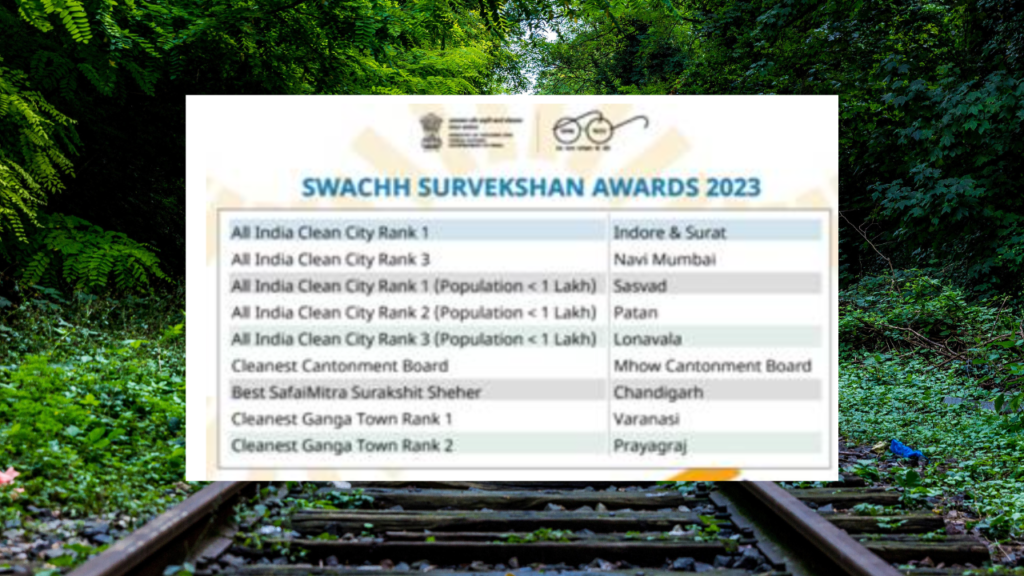
Swachh Bharat 2.0
Villages and towns that had been declared Open Defecation Free (ODF) in the first phase of the SBM, now have to meet certain criteria to maintain their ODF status and for the government in 2020, launched the SBM 2.0. According to the official website of Swachh Bharat Mission, the government sanctioned a total outlay of Rs. 1,40,881 crores to focus on the sustainability of the ODF status and to cover the villages with Solid and Liquid Waste Management (SLWM) to transform villages from ODF to ODF Plus by 2024-25. An ODF Plus village is one which has sustained its Open Defecation Free (ODF) status along with implementing either solid or liquid waste management systems.
The government data claims that three-fourth of the total villages in the country i.e., 75 percent villages have achieved ODF Plus status under Phase II of the Mission. In fact, Karnataka is one of the top performing states in the Swachh Bharat Mission 2.0.
In taluk Hungund, seven gram panchayts have ODF plus tag. “Every village has one Solid Waste Management Unit for which women under the National Rural Livelihoods Mission are sent to collect waste from every household. Apart from that Self Help Groups (SHGs) in association with the Gram Panchayat work to collect waste and recycle it at Material Recycling Facility of the taluk.” Naveen Hanchate, technical coordinator SBM, Hungund panchayat, said.
Data by Hungund Municipal Council suggests that Rs.19.80 lakhs have been sanctioned for the year 2023-24, to set up various facilities in the taluk for sewage management, solid waste management and to set up a polluted waste water treatment facility.“ A rainwater harvesting facility unit is being built within the Hungund municipality at a cost of around Rs. 5.40 lakh. A treatment plant for polluted sewage water will be built at a cost of another Rs. 5.40 lakh while Rs. seven lakh have been allocated to add more features to the solid waste management unit of the taluk. We are also going to plant saplings in the solid waste management unit at a cost of Rs. two lakh,” the official from the municipality explained.
However, contrary to the claims of local and national authorities, the roads in most of these villages are lined with heaps of garbage where rats and cockroaches breed. Ironically, Shanthamma and many women like her go out to defecate in the open on garbage heaps only.
The claims of authorities are refuted when officials within the system admit to the failure of the system in providing facilities and more than that, educating people about personal and community hygiene practices.
“We have taken several awards from the government for the Swachh Bharat Abhiyan and for many such cleanliness programs but the truth is open defecation is still a big issue of this taluk. There is no particular reason for it, it’s a mix of many issues in the execution of plans and in communication with people,” a taluk official said on the condition of anonymity.
Despite efforts by authorities and communities at all levels, what is it that still prevents zeroing the practice of open defecation on ground. Experts say it is a culmination of the ignorance of the society and the authorities. Gowthamghosh B, an expert in public health and health survey research, said “Definitely, SBM has brought tremendous awareness and people’s participation in achieving ODF through the ‘toilet movement’. However, the program implementation overlooks the community sensitization on issues like open defecation and its ill effects leads to conflict. At the same time the supply side-which is the Government, or the local authorities must ensure suitable and sustainable toilet models at the community level.”
Dr. Chetana H.D. agreed that open defecation is a very common practice in rural areas of India. She warned of the not so common, rather, grave implications of the practice. “Water-borne diseases are the biggest consequence of open defecation. People defecate in around water bodies which contaminates water. As a result of this, people who consume that contaminated water in any form, catch diseases like Cholera, typhoid, hepatitis A and Eand intestinal worm diseases and even polio,” she said.
Basic needs and solution
Dr. Chetna said that there is no point of introducing rules and schemes until you educate people on ground. People have to be aware of the effects of open defecation to be willing to stop the practice. “It has to start from childhood, we need to sensitize children in schools to use toilets. In fact, one way to make people follow sanitation norms is to incentivize people for doing so. There has to be a holistic approach to deal with this. People’s attitude has to be changed, to change the reality on ground,” she said.
Experts say the solutions have to be suitable to the society and its needs. “Recently, few learned people started advocating for imposing fines for improper use of public toilets, which is again a debatable topic. Creating awareness, educating the users in proper usage of public toilets and user sensitization on maintaining toilet hygiene through small group interaction, individual counseling can be tried,” Gowthamghosh said.
The issue of open defecation is neither new nor unknown. It has affected communities in rural India since centuries. It is therefore, cardinal to find ways to implement policies and plans in manner that reach the actual beneficiaries.
“But our problems are too small for the world to notice. I am old and it is nearly impossible for me to go far away from home and sit in open fields. But now I have come to terms with my situation, we all have. Because no matter who comes here to ask us what problems we have, no one turns up with a solution. If possible please tell about our sufferings to the big men,” Shanthamma said pleading with joined hands and tears of disappointment in her eyes.

